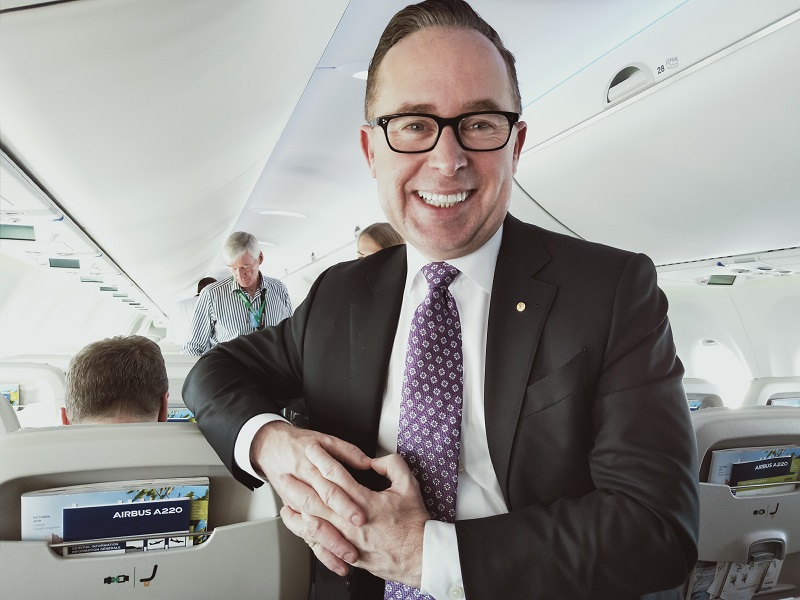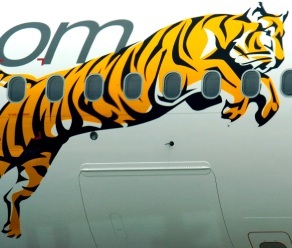Strong domestic demand sees Qantas "turning the corner"
19 May, 2021
4 min read
By joining our newsletter, you agree to our Privacy Policy


Qantas says it is “turning the corner” as a sustained domestic recovery pushes it towards 95 percent of pre-COVID domestic capacity and business traffic continues to grow.
The airline is still predicting a $A2 billion plus statutory pre-tax loss in fiscal 2021 and says it has lost $A16 billion in revenue since COVID began.
But it anticipates the domestic recovery, combined with the performance of its loyalty and freight divisions, means balance sheet repair is underway and its expects underlying earnings of $A400 to $A450 million for the financial year.
It is also expects to be free cash flow positive in 2H21 and says it has a strong total liquidity position of $A4 billion. Net debt had peaked and was also starting to decline, it said.
READ: Virgin chief's COVID death comments spark backlash.
A key driver is strongly growing leisure traffic as travelers defer international travel, something the airline now does not expect to resume in any significant way before the end of the year.
Corporate travel has continued to grow and is now at 75 percent of pre-pandemic levels compared to to 65 percent in April. It has started 38 new routes since July to get its assets working.
The group is on track to reach 95 per cent of its pre-COVID domestic capacity for the fourth quarter of the current financial year, with Qantas expecting to average 107 percent of pre-COVID domestic capacity and Jetstar 120 per cent in FY22. This assumes no significant further lockdowns.
Of about 22,000 roles across the group, some 16,000 are now back at work, including all domestic crew, all corporate employees and some international crew.
Qantas and Jetstar have brought all their domestic aircraft back into service and QantasLink has activated eight of up to 14 Embraer E190s as part of its deal with Alliance Airlines.
CEO Alan Joyce said the rebound in domestic travel looked as though it could exceed pre-COVID levels, at least until international borders re-opened, and Jetstar had been profitable in April as demand soared over Easter and the school holidays.
Jetstar is reactivating five Boeing 787-8s for domestic use as well as six Airbus A320s on load from Jetstar Japan.
“We have a long way still to go in this recovery, but it does feel like we’re slowly starting to turn the corner,’’ Joyce said.
“It’s great to see so many of our people now back at work and the majority of our fleet back in the air.
“Our recovery strategy of targeting cash-positive flying rather than pre-COVID margins is helping increase activity levels and repair our balance sheet.
“The fact we’re making inroads to the debt we needed to get through this crisis shows the business is now on a more sustainable footing.”
On the international front, the airline said travel demand between Australia and New Zealand was rebuilding steadily but had been affected by restrictions in both countries due to small COVID outbreaks.
It its fleet of Boeing 787-9s and about half of its A330 aircraft were active, flying a mix of freight, repatriation and regular passenger services.
Joyce also warned that Australia had to boost efforts to rollout vaccines.
“We’ve adjusted our expectations for when international borders will start opening based on the government’s new timeline, but our fundamental assumption remains the same – that once the national vaccine rollout is effectively complete, Australia can and should open up,’’ he said.
“That’s why we have aligned the date for international flights restarting in earnest with a successful vaccination program.
“No one wants to lose the tremendous success we’ve had at managing COVID but rolling out the vaccine totally changes the equation. The risk then flips to Australia being left behind when countries like the US and UK are getting back to normal.
“Australia has to put the same intensity into the vaccine rollout as we’ve put on lockdowns and restrictions, because only then will we have the confidence to open up.”
Qantas estimates that by the end of FY21 it will have lost $A16 billion in group revenue since the start of COVID.
It has introduced a recovery program targeting at least $1 billion in annual cost reduction by FY23 and says this well on track, with $600 million to be delivered this financial year.
It said 90 percent of already announced redundancies were complete and an offer of voluntary redundancies for Qantas international cabin crew was expected to generate several hundred applications.
The plan also includes a two-year wage freeze across the group with 2 per cent subsequent annual increases compared with 3 per cent pre-COVID.
Next Article
3 min read
Virgin gets nod for Tiger deal

Get the latest news and updates straight to your inbox
No spam, no hassle, no fuss, just airline news direct to you.
By joining our newsletter, you agree to our Privacy Policy
Find us on social media
Comments
No comments yet, be the first to write one.
